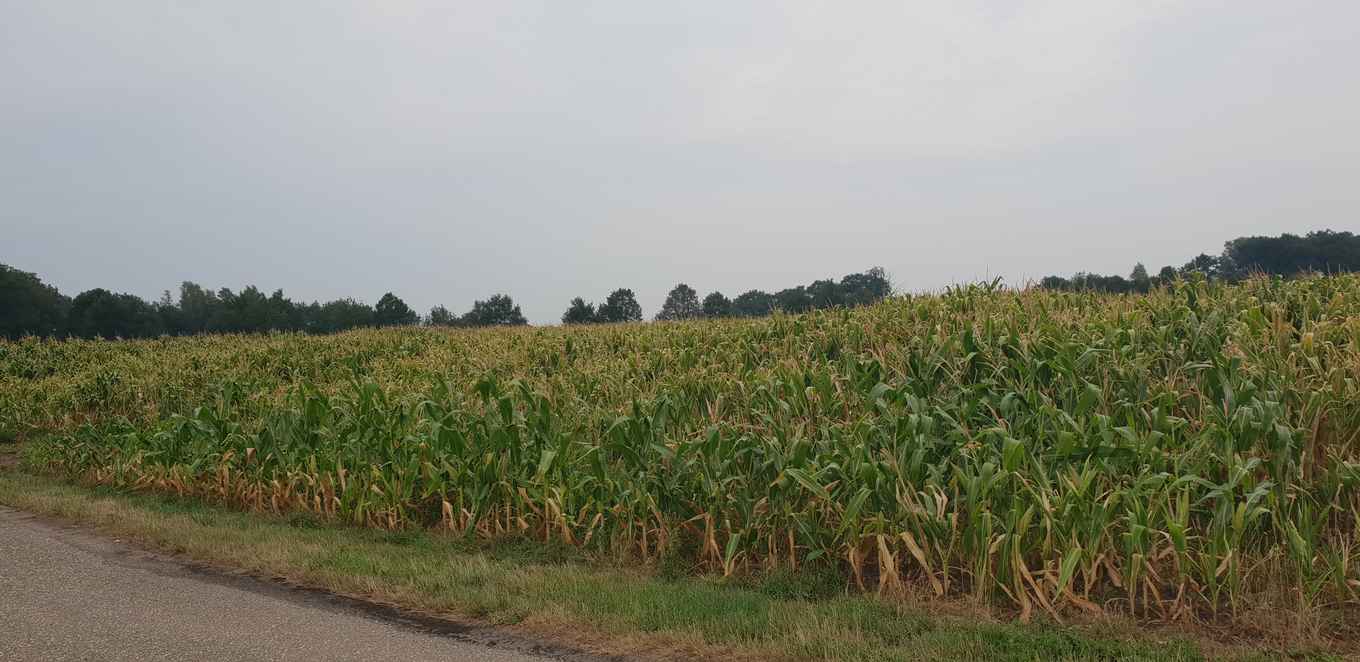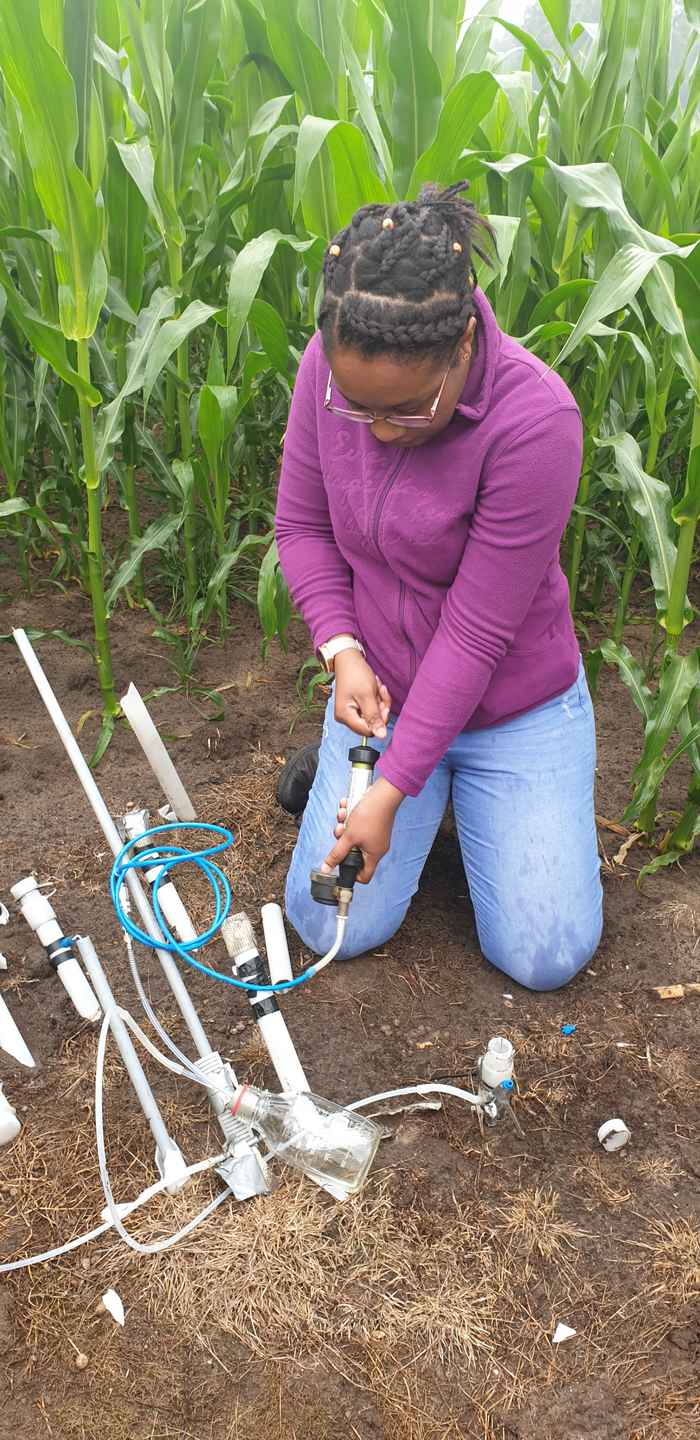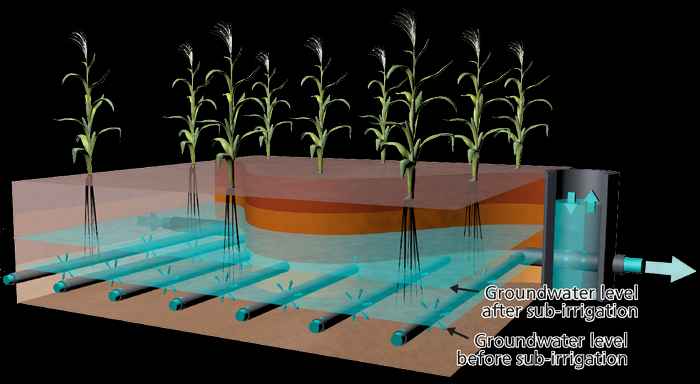Solution to water shortage
Reuse of sewage for groundwater fed irrigation
24 September 2020

The use of treated domestic wastewater in aboveground irrigation - and sometimes even untreated - is already widespread, particularly in the Middle East, South and North Africa and other Mediterranean countries, where the availability of freshwater is limited. However, drawbacks of this direct irrigation do exist, such as rapid evaporation. Fieldworkers and crops come into direct contact with contaminated water during aboveground irrigation, posing serious health risks.
Now, treated domestic wastewater is mostly directly discharged into surface waters such as rivers and lakes. Conventional wastewater treatment plants are unable to remove many micropollutants. This means that treated wastewater contains pharmaceuticals, antibiotic resistant bacteria and a wide range of other chemicals.

Sprinkler versus groundwater fed irrigation
Lead author of the study is PhD candidate Dominique Narain-Ford, from the UvA Institute for Biodiversity and Ecosystem Dynamics: ‘This discharge is particularly a problem during low flow conditions in the summer, causing small surface waters to consist primarily of treated wastewater. Water from these streams is in many cases directly applied to crops by sprinkler irrigation, resulting in the unintentional exposure to human pathogens and other micropollutants.’
When treated domestic wastewater is supplied via groundwater fed irrigation, also referred to as sub-surface irrigation, soil passages eliminates direct contact. It also makes optimal use of soil processes that filter, buffer, break down and minimize the spread of chemicals.
Dry seasons
The newly published research on sub-surface irrigation focused on the Netherlands, which is an ideal study location: a highly densely populated country, with 1.9 million hectares of cropland and a well distributed sewage treatment plants across the country. As yearly average, the total sprinkler irrigation water demand in the Netherlands is on average 144 million m3. Recently there were several dry years with peaks up to 256 million m3. Narain-Ford: ‘In our study we explored where, and how much, sewage plant effluent can directly be re-used in agricultural sub-surface irrigation during an average and dry season scenario.’
Sewage plants in the Netherlands have an annual discharge effluent of 1.9 billion m3, which is much higher than the annual water demand for aboveground irrigation systems. ‘Compared to aboveground irrigation techniques, sub-surface irrigation requires a lot of water for raising groundwater to a desired level, while less irrigation water is lost to the atmosphere through evaporation of interception water,’ explains Narain-Ford.
The researchers showed that in the Dutch situation, direct intentional reuse of sewage plant effluent can fulfil up to 25% of croplands SSI water demand present within a five-kilometre transport buffer from the sewage plants. During a dry year this can be up to 17%. This means that respectively 78% and 84% of the total available Dutch sewage plant effluent would be used.
Noteworthy is that based on the size of the area infiltrated with sewage plant effluent during sub-surface irrigation, over a prolonged period the sub-surface irrigation water demand will diminish because of elevated groundwater levels. Narain-Ford: ‘Sub-surface irrigsation has the potential to kill two birds with one stone. Our insights will contribute to the safe use of wastewater in the concept of water reuse in the circular economy.’
Publication details
Dominique M. Narain-Ford, Ruud P. Bartholomeus, Bernard W. Raterman, Ian van Zaanen, Thomas L. ter Laak, Annemarie P. van Wezel, Stefan C. Dekker: ‘Shifting the imbalance: Intentional reuse of Dutch sewage effluent in sub-surface irrigation,’ in Science of the Total Environment (January 2021). Open Access. DOI: https://doi.org/10.1016/j.scitotenv.2020.142214
Dominique M. Narain-Ford, Ruud P. Bartholomeus, Stefan C. Dekker, Annemarie P. van Wezel: ‘Natural Purification Through Soils: Risks and Opportunities of Sewage Effluent Reuse in Sub-surface Irrigation,’ in Reviews of Environmental Contamination and Toxicology (18 September 2020). Open Access. DOI: https://doi.org/10.1007/398_2020_49
